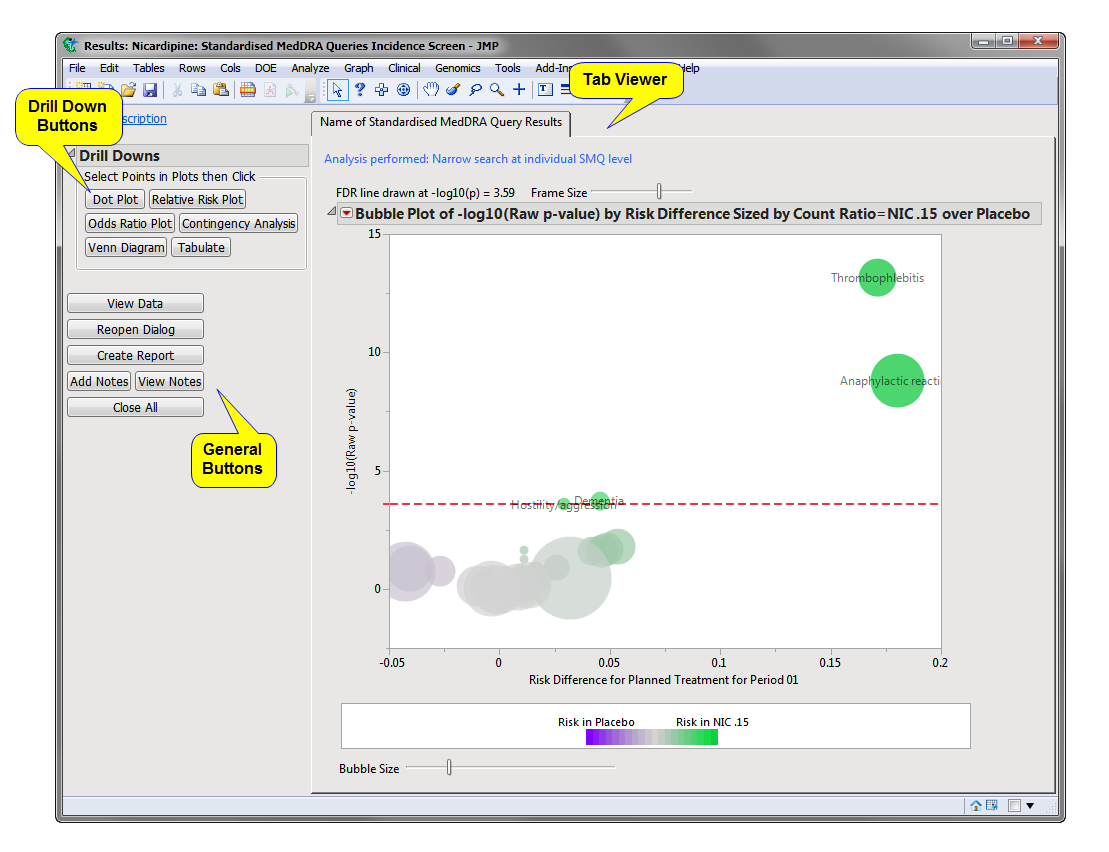This report screens Standard
MedDRA
Query terms by performing a
Cochran-Mantel-Haenszel exact test
on all 2 x 2 tables constructed from event incidence and treatment
arm
. Output is a table of multiplicity-adjusted
p-values
, an accompanying
volcano plot
of relative risk and a SAS data set of indicator
variables
that can be used as input for other reports.
Running
Standardized MedDRA Queries Incidence Screen
for the
Nicardipine
study using
MedDRA
Version 16.0 files generates the report shown below.
Note
: Your output might vary depending on which version of MedDRA you provide (in terms of the location of the *.
asc
files).
The
Report
contains the following elements:
Provides one or more
Volcano Plot
s to summarize the incidence of
SMQs
between pairs of treatments. For the selected set of
SMQs
from the study
dialog
using
Perform incidence analysis using the following SMQs:
, one or more
volcano plots
are generated summarizing the difference in incidence between pairs of treatments.
|
•
|
Dot Plot
: Click
|
|
•
|
Relative Risk Plot
: Click
|
|
•
|
Odds Ratio Plot
: Click
|
|
•
|
Contingency Analysis
: Click
|
|
•
|
Venn Diagram
: Click
|
|
•
|
Tabulate
: Click
|
|
•
|
Click
|
|
•
|
Click
|
|
•
|
Click
|
|
•
|
Click
|
|
•
|
Click the
arrow to reopen the completed report dialog used to generate this output.
|
|
•
|
Click the gray border to the left of the
Options
tab to open a dynamic report navigator that lists all of the reports in the review. Refer to
Report Navigator
for more information.
|
Include serious adverse events only
,
Event Type
,
Ignore available treatment emergent flags
,
Offset for End of Dosing
Additional Filter to Include Subjects
2
,
Merge supplemental domain
,
Filter to Include Adverse Events
,
Select the population to include in the analysis
,
By Variables
Subject-specific filters must be created using the
Create Subject Filter
report prior to your analysis.
For more information about how to specify a filter using this option, see
The SAS WHERE Expression
.

